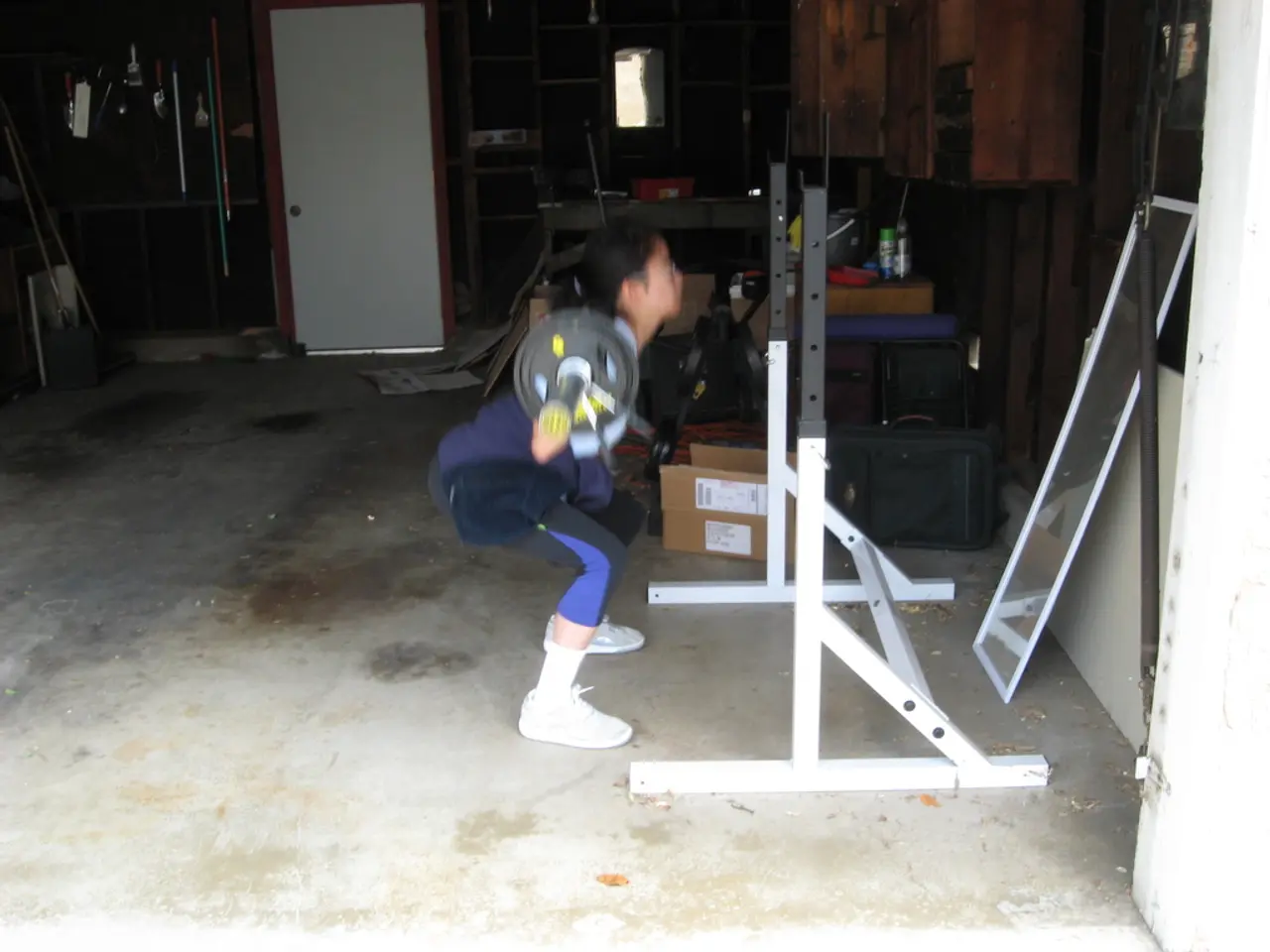Kickstarting Your Health Adventure: Top Exercises for Newbie Fitness Enthusiasts
Embarking on a fitness journey can be an exciting yet daunting prospect. To help beginners navigate this new terrain, we've put together a beginner-friendly plan that balances strength, cardio, and flexibility exercises.
Strength Training (Full Body Focus, 2-3x per week)
A solid strength training routine is the cornerstone of any fitness program. For beginners, a full-body focus is recommended, with sessions held 2-3 times per week. Here's a sample routine:
- Warm-up with 5-10 minutes light cardio (e.g., brisk walking or cycling)
- Compound exercises like:
- Squats (3 sets of 12 reps)
- Push-ups (3 sets of 10-12 reps)
- Dumbbell rows (3 sets of 12 reps)
- Glute bridges (3 sets of 15 reps)
- Plank holds (30 seconds)
- Include lower body focus days with lunges, deadlifts, step-ups, and wall sits as alternatives
- Cool down with 5-10 minutes of stretching to improve flexibility and aid recovery
Cardio Training (2-3x per week, 20-30 minutes)
Cardio exercises are essential for heart health, increasing stamina, and aiding in weight management. For beginners, start with low-impact activities like brisk walking, jogging, or cycling. As endurance improves, progress to running sessions of 20-30 minutes, including intervals of running and walking.
Other cardio options include squat jumps for plyometric strength with cardio benefits or HIIT (high-intensity interval training) alternating short bursts of effort with rest periods for 15-30 minutes. Remember to warm up and cool down with stretching to prevent injury.
Flexibility Work (Daily or every workout session)
Flexibility exercises are crucial for reducing the risk of injury, improving posture, and enhancing overall movement. Perform dynamic stretches before workouts (e.g., leg swings, arm circles) and static stretches post-workout targeting major muscle groups such as hamstrings, calves, quadriceps, chest, back, and shoulders. Hold stretches for 20-30 seconds each to improve range of motion and reduce muscle tightness.
Consider dedicating sessions of yoga or stretching routines at least 1-2 times per week for enhanced flexibility and recovery.
A Weekly Beginner Schedule
| Day | Focus | Sample Activities | |------------|---------------------------|----------------------------------------------| | Day 1 | Full Body Strength | Squats, push-ups, dumbbell rows, plank | | Day 2 | Cardio + Core | 20-30 min jogging, bicycle crunches, leg raises | | Day 3 | Lower Body Strength | Lunges, deadlifts, step-ups, wall sit | | Day 4 | Rest / Flexibility | Stretching or yoga session | | Day 5 | Full Body Strength or Circuit | Combine strength moves with light cardio | | Days 6-7 | Rest/Active Recovery | Light walking, stretching |
This mix supports balanced development of muscle strength, cardiovascular fitness, and flexibility without overwhelming beginners, allowing recovery and gradual progression.
Key Points for Beginners
- Warm up thoroughly before exercising
- Focus on form and technique over weight or speed initially
- Allow rest days to aid recovery
- Gradually increase intensity, duration, or load with time to avoid injury
By following these beginner-friendly workouts, individuals can kickstart their fitness journey and build a healthier lifestyle step by step.
Additional Tips
- Bodyweight exercises are an excellent way to build strength, improve mobility, and endurance. Squats, push-ups, lunges, plank, and glute bridges are effective exercises.
- Create a weekly workout schedule to ensure consistency and structure.
- Remember to stretch before and after workouts to keep muscles flexible and prevent stiffness.
- Include stretches like the cat-cow stretch, neck stretch, hamstring stretch, and shoulder rolls in your routine.
With dedication and consistency, these beginner-friendly workouts can help you build a solid fitness base that can be expanded or specialized later. Happy exercising!
- A strong foundation for any fitness journey involves strength training, focusing on a full-body routine that is performed 2-3 times per week.
- For beginners, an effective strength training session may include squats, push-ups, dumbbell rows, glute bridges, and plank holds.
- Cardio exercises play a key role in heart health, increasing stamina, and weight management, with low-impact activities like brisk walking or cycling being suitable for beginners.
- Over time, as endurance improves, beginners can progress to running sessions or high-intensity interval training (HIIT).
- Flexibility exercises are essential for reducing the risk of injury, improving posture, and enhancing overall movement, with dynamic stretches before workouts and static stretches after workouts targeting major muscle groups.
- Dedicate at least 1-2 sessions per week for yoga or stretching routines to further enhance flexibility and recovery.
- A balanced weekly schedule for beginners may include full-body strength days, cardio sessions, and days for lower body focus, rest, or active recovery.
- Key points for beginners include warm-up before exercising, focus on form, allow rest days, and gradually increase intensity.
- In addition to the structured workouts, bodyweight exercises are valuable for building strength, improving mobility, and endurance, while consistent stretching before and after workouts is crucial for keeping muscles flexible and preventing stiffness.




